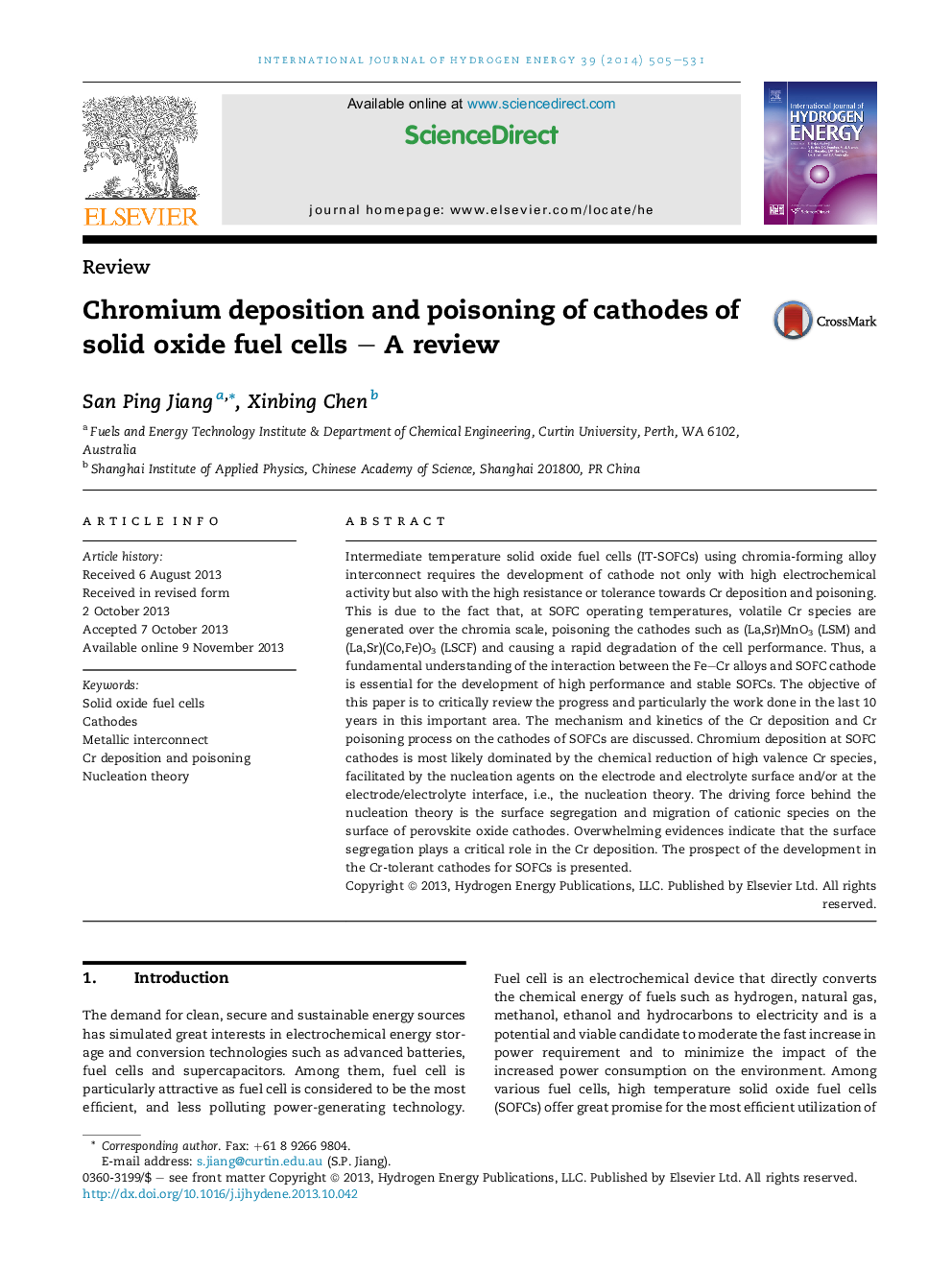| Article ID | Journal | Published Year | Pages | File Type |
|---|---|---|---|---|
| 1273964 | International Journal of Hydrogen Energy | 2014 | 27 Pages |
•Chromium deposition and poisoning on SOFC cathodes were comprehensively reviewed.•Electrochemical deposition mechanism and nucleation theory were discussed in detail.•Nucleation theory is more applicable for the Cr deposition under SOFC operation conditions.•Prospect of development of Cr-tolerant cathodes was discussed.
Intermediate temperature solid oxide fuel cells (IT-SOFCs) using chromia-forming alloy interconnect requires the development of cathode not only with high electrochemical activity but also with the high resistance or tolerance towards Cr deposition and poisoning. This is due to the fact that, at SOFC operating temperatures, volatile Cr species are generated over the chromia scale, poisoning the cathodes such as (La,Sr)MnO3 (LSM) and (La,Sr)(Co,Fe)O3 (LSCF) and causing a rapid degradation of the cell performance. Thus, a fundamental understanding of the interaction between the Fe–Cr alloys and SOFC cathode is essential for the development of high performance and stable SOFCs. The objective of this paper is to critically review the progress and particularly the work done in the last 10 years in this important area. The mechanism and kinetics of the Cr deposition and Cr poisoning process on the cathodes of SOFCs are discussed. Chromium deposition at SOFC cathodes is most likely dominated by the chemical reduction of high valence Cr species, facilitated by the nucleation agents on the electrode and electrolyte surface and/or at the electrode/electrolyte interface, i.e., the nucleation theory. The driving force behind the nucleation theory is the surface segregation and migration of cationic species on the surface of perovskite oxide cathodes. Overwhelming evidences indicate that the surface segregation plays a critical role in the Cr deposition. The prospect of the development in the Cr-tolerant cathodes for SOFCs is presented.
